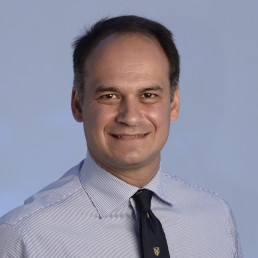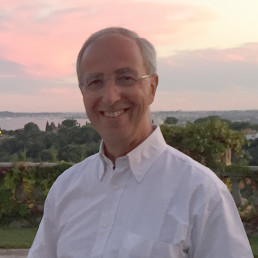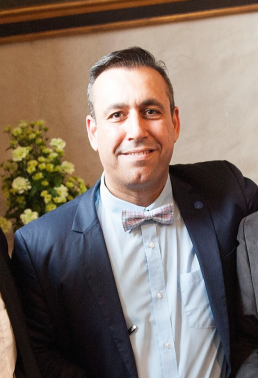
Dear Members,
We are now in “Full Congress Mode” here in Munich. The Call for Abstracts has been made (deadline for submission is 31st March 2016) and the super new website has been launched. Please do familiarise yourself with it – the address couldn’t be easier to remember: www.ehs-congress.org Use it. It is there for you.
Among our main topics, there is something for everyone to get their teeth into: ECF; Management of hip and pelvic fractures; Revision surgery in THA; Hip arthroscopic surgery; Results of Registries; Difficult primary hips; Hip preserving surgery; Periprosthetic fractures; plus more. It’s all on the website. Be an active EHS member and contribute to the scientific programme of our congress.
Your EHS President, Prof Werner E. Siebert
On behalf of the EHS ExCom, I recommend all our members to sign up to the EHS Congress newsletter via the dedicated website mentioned left.
Meanwhile, in our own newsletter here, we have contributions from France and Sweden this month and our thanks go to long-time member Dr Tabutin and to Assoc Prof Sayed-Noor.
We still have outstanding membership fees. If you would be so kind as to rectify this, EHS would be grateful. You know who you are! Thank you.
Assoc Prof Eleftherios Tsiridis,
EHS Secretary General


NATIONAL REPRESENTATIVE FRANCE
Dr Jacques Tabutin
Centre Hospitalier de Cannes
Cannes Cedex
If France is home of gastronomy, perfumes and luxury, it is also a country of innovation in bone and joint surgery especially regarding hip and knee:-
- Robert Merle d’Aubigné and PMA score
- Robert Judet and the anterior approach
- Albert Trillat and the Lyon School of Knee Surgery
- ceramic bearings (Paul Boutin 1973)
- dual mobility cup (Gilles Bousquet 1980)
- the “French paradox” for cemented stems
- cementless Corail stem
- distally locked femoral revision stems
- gamma nail (Grosse and Tagland)
- classification of periprosthetic fractures
(symposium SOFCOT 2005)
Nowadays among the 3,500 orthopaedic and trauma surgeons, 60 per cent are in private practice (mainly doing orthopaedics) and 40 per cent is hospitals (mainly dealing with trauma). The activity is high with 140,000 hip protheses and 70,000 knee prostheses per year.
The ruling body SOFCOT has evolved to a professional society (CNP SOFCOT) with several chapters, AOT: organizing the congress, CFCOT for education, SNCO the syndicate and Orthorisq dealing with medical risk. SOFCOT is home of partner societies (such as SFA for arthroscopy) and associate ones (such as SFHG for hip and knee).
NATIONAL REPRESENTATIVE SWEDEN
Arkan S Sayed-Noor MD, PhD, FRCS
Associate Professor & Consultant Trauma and
Orthopaedic Surgeon,
Umeå University & Sundsvall Teaching Hospital
I have been Nat Rep for Sweden for three years – previously I was a Full Member and before that a Young Member. These years with EHS have given me the privilege to be well updated about scientific advances in the management of hip joint disorders. As Nat Rep, I try to act as a link between the EHS and my Swedish orthopaedic colleagues.
Sweden is known for its healthcare related registries, and for hip joint interested orthopaedicians, the Swedish hip arthroplasty register (SHAR, est. 1979) and the Swedish National Registry of hip fracture patient care (RIKSHÖFT, est. 1988) are of special importance. For instance, the annual reports of SHAR have provided an excellent source of information about the outcome of using different hip implants and surgical approaches. The great thing about SHAR is the positive way its reports are received by most orthopaedicians. We realized that registries have certain shortcomings and I think we have been able to deal with them during the years. We consider SHAR as a great opportunity to improve our short and long term results. One personal experience of this was when the SHAR, a few years ago, showed that my orthopaedic department had a high risk of 2 years re-operation of THA due to dislocation. This resulted in reviewing our routine of perioperative THA care., e.g. standardizing patient positioning at the operating table to improve acetabular cup positioning; improving preoperative templating; changing prosthetic head size from 28mm to 32mm and improving postoperative physio-therapy with so called dislocation preventing measures. Also, we now operate all our femoral neck fracture patients using the direct lateral approach instead of the posterior approach. These steps resulted in a drastic reduction of our dislocation rate.
Another hot topic here is the orthopaedic residency training programme. The guidelines for reaching a specialist degree in orthopaedics have been revised recently. In this regard, a close collaboration between the Swedish Board of Health and Welfare and the Swedish Orthopaedic Association aimed to find the suitable requirements taking into consideration the national and international standards where the new European curriculum has an important role.


